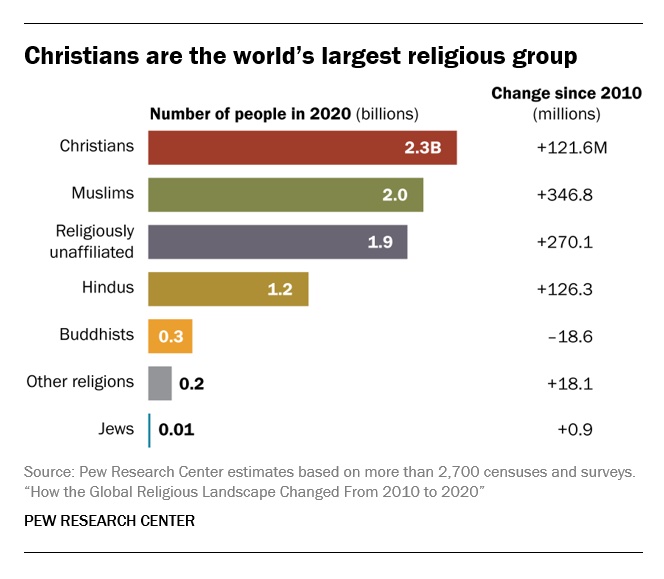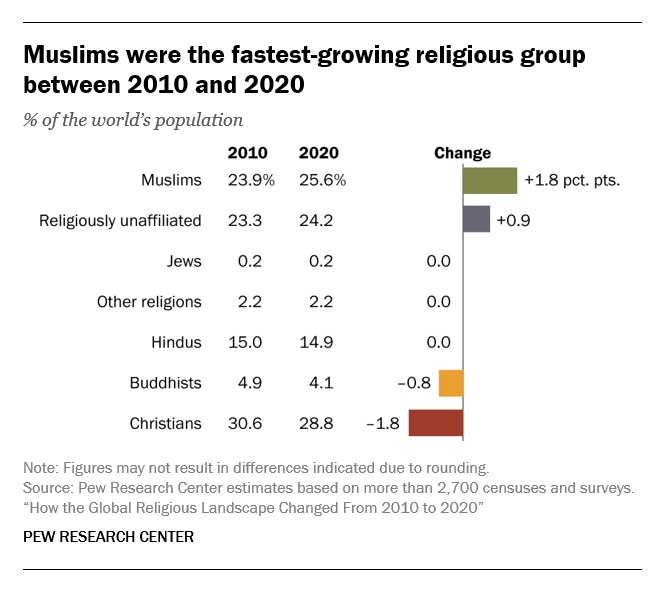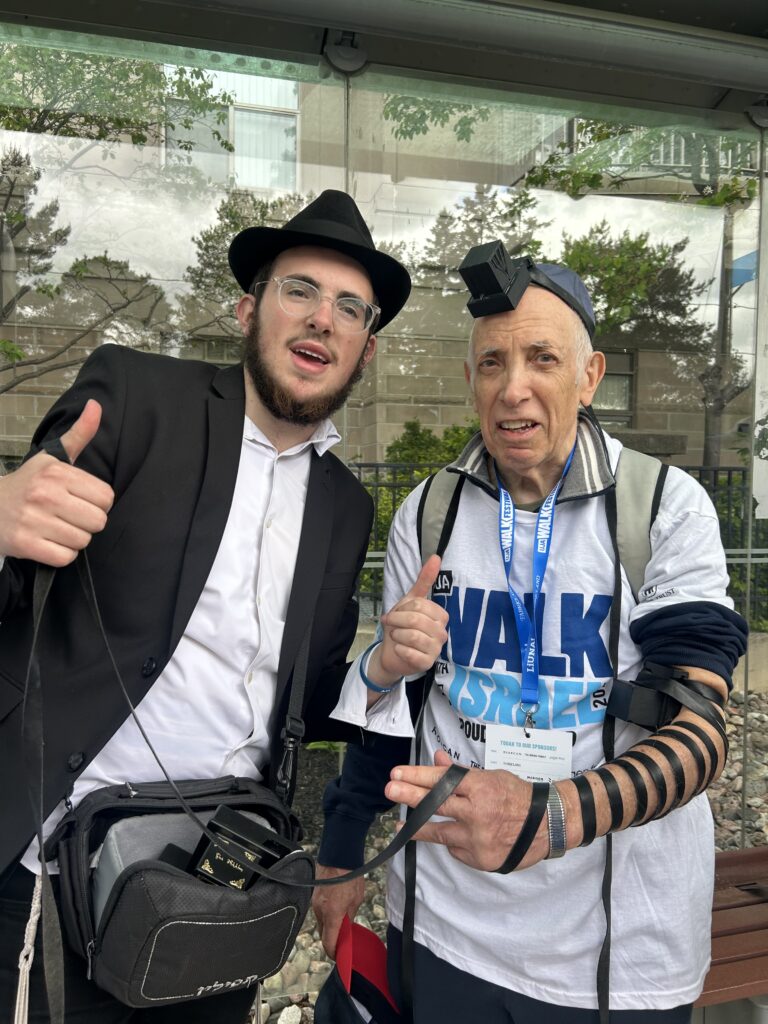Uncategorized
The hora, the hora! How Jewish wedding music got that way
(JTA) — When my wife and I were planning our wedding, we thought it might be cool to hire a klezmer band. This was during the first wave of the klezmer revival, when groups like The Klezmatics and The Klezmer Conservatory Band were rediscovering the genre of Jewish wedding music popular for centuries in Yiddish-speaking Eastern Europe.
Of course we also wanted to dance to rock ‘n’ roll and needed musicians who could handle Sinatra for our parents’ benefit, so we went with a more typical wedding band. Modernity won out over tradition.
Or did it? Musician and musicologist Uri Schreter argues that the music heard at American Jewish weddings since the 1950s has become a tradition all its own, especially in the way Old World traditions coexist with contemporary pop. In a dissertation he is writing about the politics of Jewish music in the early postwar period, Schreter argues that American Jewish musical traditions — especially among secularized Conservative and Reform Jews — reflect events happening outside the wedding hall, including the Holocaust, the creation of Israel and the rapid assimilation of American Jews.
That will be the subject of a talk he’ll be giving Monday for YIVO, titled “Yiddish to the Core: Wedding Music and Jewish Identity in Postwar New York City.”
Because it’s June — and because I’m busy planning a wedding for one of my kids one year from now — I wanted to speak to Schreter about Jewish weddings and how they got that way. Our Zoom conversation Wednesday touched on the indestructibility of the hora, the role of musicians as “secular clergy” and why my Ashkenazi parents danced the cha-cha-cha.
Born in Tel Aviv, Schreter is pursuing his PhD in historical musicology at Harvard University. He is a composer, pianist and film editor.
Our conversation was edited for length and clarity.
I was struck by your research because we’re helping to plan a child’s wedding now. It’s the first wedding we’ve planned since our own, and we’re still asking the same questions, like, you’ve got to make sure the band can handle the hora and the Motown set and, I don’t know, “Uptown Funk.” Your research explores when that began — when American Jewish weddings began to combine the traditional and secular cultures.
In the period that I’m talking about, post-World War II America, this is already a fact of life for musicians. A lot of my work is based on interviews with musicians from that period, folks now in their 80s and 90s. The oldest one I have started playing professionally in 1947 or ’48. Popular American music was played at Jewish weddings as early as the 1930s, but it’s a question of proportion — how much the wedding would feature foxtrots and swing and Lindy Hop and other popular dance tunes of the day, and how much of it is going to be klezmer music.
In the postwar period, most of the [non-Orthodox] American Jewish weddings would have featured American pop. For musicians who wanted to be in what they called the “club date” business, they needed to be able to do all these things. And some “offices” — a term they used for a business that books wedding bands — would have specialists that they could call on to do a Jewish wedding.
You’re writing about a period when the Conservative movement becomes the dominant American Jewish denomination. They have one foot in tradition, and the other in modernity. What does a wedding look like in 1958 when they’re building the big suburban synagogues?
The difference is not so much denominational but between the wide spectrum of Orthodoxy and the diverse spectrum of what I describe as “secular.”
Meaning non-Orthodox — Reform, Conservative, etc.?
Right. Only in the sense that they are broadly speaking more secular than the Orthodox. And if so they are going to have, for the most part, one, maybe two sets of Jewish dance music — basically a medley of a few Jewish tunes. You might have a wedding where it could be a quarter of the music or even half would be Jewish music, but this would be for families that have a much stronger degree of attachment to traditional Jewish culture, and primarily Yiddish culture.
There’s a few interrelated elements that shape this. Class is an important thing. For lower class communities in some areas, and I am talking primarily about New York, you’d have communities that are a little bit more secluded, probably speaking more Yiddish at home and hanging out more with other Jewish people from similar backgrounds. So these kinds of communities might have as much as a third or half of the music be Jewish, even though they consider themselves secular. It’s actually very similar to an Orthodox wedding, where you might also have half and half [Jewish and “American” music].
Jews in the higher socioeconomic class might, in general, be more Americanized, and want to project a more mainstream American identity. They might have as little as five minutes of Jewish music, just to mark it that they did this. Still, it’s very important for almost all of them to have those five minutes — because it’s one of the things that makes the wedding Jewish. I interviewed couples that were getting married in the ’50s, and a lot of them told me, “You need to have Jewish dance music for this to be a Jewish wedding.”
Composer and pianist Uri Schreter is pursuing his PhD in historical musicology at Harvard University. (Nicole Loeb)
When I was growing up in the 1970s at a suburban Reform synagogue on Long Island, klezmer was never spoken about. I don’t know any parents who owned klezmer albums. Then when I got married a decade later, it was in the middle of the klezmer revival. Am I right about that? Were the ’50s and ’60s fallow periods for klezmer?
You’re definitely right. Up until the mid-1920s, you still have waves of immigration coming from Eastern Europe. So you still have new people feeding this desire for the traditional culture. But as immigration stops and people basically tried to become American, the tides shift away from traditional klezmer.
The other important thing that happens in the period that I’m looking at is both a negative rejection of klezmer and a positive attraction to other new things. Klezmer becomes associated with immigrant culture, so people who are trying to be American don’t want to be associated with it. It also becomes associated with the Holocaust, which is very problematic. Anything sounding Yiddish becomes associated for some people with tragedy.
At the same time, and very much related to this, there’s the rise of Israeli popular culture, and especially Israeli folk songs. A really strong symbol of this is in the summer of 1950, when the Weavers record a song called “Tzena, Tzena,” a Hebrew Israeli song written in the 1940s which becomes a massive hit in America — it’s like number two in the Billboard charts for about 10 weeks. Israeli culture becomes this symbol of hope and the future and a new society that’s inspiring. This is all in very stark contrast to what klezmer represents for people. And a lot of the composers of Israeli folk song of its first decades had this very clearly stated ideology that they’re moving away from Ashkenazi musical traditions and Yiddish.
So the Jewish set at a wedding becomes an Israeli set.
At a typical Conservative wedding in the 1950s and ’60s, you might hear 10 minutes of Jewish music. The first one would be “Hava Nagila,” then they went to “Tzena, Tzena,” then they would do a song called “Artza Alinu,” which is today not very well known, and then “Hevenu Shalom Aleichem.” They are songs that are perceived to be Israeli folk songs, even though if you actually look at their origins, it’s a lot murkier than that. Like two of the songs I just mentioned are actually Hasidic songs that received Hebrew words in pre-state Palestine. Another probably comes from some sort of German, non-Jewish composer in 1900, but is in Hebrew and is perceived to be a representation of Israeli culture.
But even when the repertoire already represents a shift towards what’s easier to digest for American Jewry, the arrangements and the instruments and the musical ornamentation are essentially klezmer. The musicians I spoke to said they did this because they felt that this is the only way that it would actually sound Jewish.
That is to say, to be “Jewish” the music had to gesture towards Ashkenazi and Yiddish, even if it were Israeli and Hebrew. As if Jews wanted to distance themselves from Eastern Europe — but only so far.
Someone like Dave Tarras or the Epstein Brothers, musicians who were really at the forefront of klezmer in New York at the time, were really focused on bringing it closer to Ashkenazi traditions. Ashkenazi Jewish weddings in America are not the totality of Jewish weddings in America, and Israeli music itself is made up of all these different traditions — North African, Middle Eastern, Turkish, Greek — but in effect most of the really popular songs of the time were composed by Ashkenazi composers. Even “Hava Nagila” is based on a melody from the Sadigura Hasidic sect in Eastern Europe.
Of course, if you’re a klezmer musician you’re allergic to “Hava Nagila.”
Then-Vice President Joe Biden dances the hora with his daughter Ashley at her wedding to Howard Krein in Wilmington, Delaware on June 2, 2012. (White House/David Lienemann)
You spoke earlier about Latin music, which seemed to become a Jewish thing in the 1950s and ’60s — I know a few scholars have focused on Jews and Latinos and how Latin musical genres like the mambo and cha-cha-cha became popular in the Catskill Mountain resorts and at Jewish weddings.
Latin music is not exclusively a Jewish thing, but it’s part of American popular culture by the late 40s. But Jews are very eagerly adopting it for sure. In the Catskills, you would often have two separate bands that alternated every evening. One is a Latin band, one is a generic American band playing everything else. And part of that is American Jews wanting to become American. And how do you become American? By doing what Americans do: by appropriating “exotic” cultures, in this case Latin. This is a way of being American.
Jews and Chinese food would be another example.
And by the way, in a similar vein, it also becomes very popular to dance to Israeli folk songs. A lot of people are taking lessons. A lot of people are going to their Jewish Y to learn Israeli folk dance.
I’ve been to Jewish weddings where the “Jewish set” feels very perfunctory — you know, dance a hora or two long enough to lift the couple on chairs and then let’s get to the Motown. Or the Black Eyed Peas because they were smart enough to include the words “Mazel Tov!” in the lyrics to “I Gotta Feeling.”
So that’s why we always hear that song! I will say though, even when the Jewish music appears superficial, it does have this deeper layer of meaning. It’s very interesting how, despite all these changes, and despite the secularization process of American Jewish weddings, the music still connects people to their Jewishness. These pieces of music are so meshed with other religious components. Of course, most people see this as secular. But a lot of people connect to their Jewish identity through elements such as Jewish music, Jewish food, certain Jewish customs that are easier to accommodate in your secular lifestyle, and the music specifically has this kind of flexibility, this fluidity between the sacred and the profane.
That’s beautiful. It sort of makes the musicians secular clergy.
It’s interesting that you say that. In his history of klezmer, Walter Zev Feldman refers to the klezmer — the word itself means “musician” — as a kind of a liminal character, an interstitial character between the secular and the mundane. The music is not liturgical, but when the klezmer or the band is playing, it is an interval woven with all these other religious components and things that have ritual meaning.
—
The post The hora, the hora! How Jewish wedding music got that way appeared first on Jewish Telegraphic Agency.
Uncategorized
How the Global Religious Landscape Changed from 2010 to 2020

Muslims grew fastest; Christians lagged behind global population increase
• Christians are the world’s largest religious group, at 28.8% of the global population. They are a majority everywhere except the Asia-Pacific and Middle East-North Africa regions. Sub-Saharan Africa has surpassed Europe in having the largest number of Christians. But Christians are shrinking as a share of the global population, as millions of Christians “switch” out of religion to become religiously unaffiliated.

• Muslims are the world’s second-largest religious group (25.6% of the world’s population) and the fastest-growing major religion, largely due to Muslims’ relatively young age structure and high fertility rate. They make up the vast majority of the population in the Middle East-North Africa region. In all other regions, Muslims are a religious minority, including in the Asia-Pacific region (which is home to the greatest number of Muslims).

• The religiously unaffiliated population is the world’s third-largest religious category (24.2% of the global population), after Christians and Muslims. Between 2010 and 2020, religiously unaffiliated people grew more than any group except Muslims, despite their demographic disadvantages of an older age structure and relatively low fertility. The unaffiliated made up a majority of the population in 10 countries and territories in 2020, up from seven a decade earlier.
• Hindus are the fourth-largest religious category (14.9% of the world’s population), after Christians, Muslims and religiously unaffiliated people. Most (99%) live in the Asia-Pacific region; 95% of all Hindus live in India alone. Between 2010 and 2020, Hindus remained a stable share of the world’s population because their fertility resembles the global average, and surveys indicate that switching out of or into Hinduism is rare.
• Buddhists (4.1% of the world’s population) are the only group in this report whose number declined worldwide between 2010 and 2020. This was due both to religious disaffiliation among Buddhists in East Asia and to a relatively low birth rate among Buddhists, who tend to live in countries with older populations. Most of the world’s Buddhists (98%) reside in the Asia-Pacific region, the birthplace of Buddhism.
• Jews, the smallest religious group analyzed separately in this report (0.2% of the world’s population), lagged behind global population growth between 2010 and 2020 – despite having fertility rates on par with the global average – due to their older age structure. Most Jews live either in North America (primarily in the United States) or in the Middle East-North Africa region (almost exclusively in Israel).
These are among the key findings of a Pew Research Center analysis of more than 2,700 censuses and surveys, including census data releases that were delayed due to the coronavirus pandemic. This report is part of the Pew-Templeton Global Religious Futures project, which analyzes global religious change and its impact on societies around the world. Funding for the Global Religious Futures project comes from The Pew Charitable Trusts and the John Templeton Foundation.
Uncategorized
Antisemitism in some unlikely places in America

By HENRY SREBRNIK Antisemitism flourishes in a place where few might expect to confront it – medical schools and among doctors. It affects Jews, I think, more emotionally than Judeophobia in other fields.
Medicine has long been a Jewish profession with a history going back centuries. We all know the jokes about “my son – now also my daughter – the doctor.” Physicians take the Hippocratic Oath to heal the sick, regardless of their ethnicity or religion. When we are ill doctors often become the people who save us from debilitating illness and even death. So this is all the more shocking.
Yes, in earlier periods there were medical schools with quotas and hospitals who refused or limited the number of Jews they allowed to be affiliated with them. It’s why we built Jewish hospitals and practices. And of course, we all shudder at the history of Nazi doctors and euthanasia in Germany and in the concentration camps of Europe. But all this – so we thought – was a thing of a dark past. Yet now it has made a comeback, along with many other horrors we assume might never reappear.
Since the Hamas attack on Israel on October 7, 2023, there has been a resurgence of antisemitism, also noticeable in the world of healthcare. This is not just a Canadian issue. Two articles on the Jewish website Tablet, published Nov. 21, 2023, and May 18, 2025, spoke to this problem in American medicine as well, referencing a study by Ian Kingsbury and Jay P. Greene of Do No Harm, a health care advocacy group, based on data amassed by the organization Stop Antisemitism. They identified a wave of open Jew-hatred by medical professionals, medical schools, and professional associations, often driven by foreign-trained doctors importing the Jew-hatred of their native countries, suggesting “that a field entrusted with healing is becoming a licensed purveyor of hatred.”
Activists from Doctors Against Genocide, American Palestinian Women’s Association, and CODEPINK held a demonstration calling for an immediate cease-fire in Gaza at the Hart Senate Office Building in Washington, D.C., Nov. 16, 2023, almost as soon as the war began. A doctor in Tampa took to social media to post a Palestinian flag with the caption “about time!!!” The medical director of a cancer centre in Dearborn, Michigan, posted on social media: “What a beautiful morning. What a beautiful day.” Even in New York, a physician commented on Instagram that “Zionist settlers” got “a taste of their own medicine.” A Boston-based dentist was filmed ripping down posters of Israeli victims and a professor at the University of Pennsylvania Perelman School of Medicine did the same. Almost three-quarters of American medical associations felt the need to speak out on the war in Ukraine but almost three-quarters had nothing to say about the war in Israel.
Antisemitism in academic medical centres is fostering noxious environments which deprive Jewish healthcare professionals of their civil right to work in spaces free from discrimination and hate, according to a study by the Data & Analytics Department of StandWithUs, an international, non-partisan education organization that supports Israel and fights antisemitism.
“Academia today is increasingly cultivating an environment which is hostile to Jews, as well as members of other religious and ethnic groups,” StandWithUs director of data and analytics, and study co-author, Alexandra Fishman, said on May 5 in a press release. “Academic institutions should be upholding the integrity of scholarship, prioritizing civil discourse, rather than allowing bias or personal agendas to guide academic culture.”
The study, “Antisemitism in American Healthcare: The Role of Workplace Environment,” included survey data showing that 62.8 per cent of Jewish healthcare professionals employed by campus-based medical centres reported experiencing antisemitism, a far higher rate than those working in private practice and community hospitals. Fueling the rise in hate, it added, were repeated failures of DEI (diversity, equity, and inclusion) initiatives to educate workers about antisemitism, increasing, the report said, the likelihood of antisemitic activity.
“When administrators and colleagues understand what antisemitism looks like, it clearly correlates with less antisemitism in the workplace,” co-author and Yeshiva University professor Dr. Charles Auerbach reported. “Recognition is a powerful tool — institutions that foster awareness create safer, more inclusive environments for everyone.”
Last December, the Data & Analytics Department also published a study which found that nearly 40 per cent of Jewish American health-care professionals have encountered antisemitism in the workplace, either as witnesses or victims. The study included a survey of 645 Jewish health workers, a substantial number of whom said they were subject to “social and professional isolation.” The problem left more than one quarter of the survey cohort, 26.4 per cent, “feeling unsafe or threatened.”
The official journal of the Alliance for Academic Internal Medicine concurs. According to “The Moral Imperative of Countering Antisemitism in US Medicine – A Way Forward,” by Hedy S. Wald and Steven Roth, published in the October 2024 issue of the American Journal of Medicine, increased antisemitism in the United States has created a hostile learning and practice environment in medical settings. This includes instances of antisemitic behaviour and the use of antisemitic symbols at medical school commencements.
Examples of its impact upon medicine include medical students’ social media postings claiming that Jews wield disproportionate power, antisemitic slogans at the University of California, Los Angeles (UCLA) David Geffen School of Medicine, antisemitic graffiti at the University of California, San Francisco (UCSF) Cancer Centre, Jewish medical students’ exposure to demonization of Israel diatribes and rationalizing terrorism; and faculty, including a professor of medicine at UCSF, posting antisemitic tropes and derogatory comments about Jewish health care professionals. Jewish medical students’ fears of retribution, should they speak out, have been reported. “Our recent unpublished survey of Jewish physicians and trainees demonstrated a twofold increase from 40% to 88% for those who experienced antisemitism prior to vs after October 7,” they stated.
In some schools, Jewish faculty are speaking out. In February, the Jewish Faculty Resilience Group at UCLA accused the institution in an open letter of “ignoring” antisemitism at the School of Medicine, charging that its indifference to the matter “continues to encourage more antisemitism.” It added that discrimination at the medical school has caused demonstrable harm to Jewish students and faculty. Student clubs, it said, are denied recognition for arbitrary reasons; Jewish faculty whose ethnic backgrounds were previously unknown are purged from the payrolls upon being identified as Jews; and anyone who refuses to participate in anti-Zionist events is “intimidated” and pressured.
Given these findings, many American physicians are worried not only as Jewish doctors and professionals, but for Jewish patients who are more than ever concerned with whom they’re meeting. Can we really conceive of a future where you’re not sure if “the doctor will hate you now?”
Henry Srebrnik is a professor of political science at the University of Prince Edward Island.
Uncategorized
The 2025 Toronto Walk (and talk ) for Israel

By GERRY POSNER There are walks and then there are walks. The Toronto UJA Walk for Israel on May 25, 2025 was one of a kind, at least as far as Canada and Jews are concerned. The number of people present was estimated to be 56,000 people or 112,000 total shoes. (How they get to that number is bewildering to me, since there is no one counting). This was 6,000 more than last year. Whether it is true or not, take it from me, it was packed. The synagogues in Canada should be so fortunate to get those numbers in total on High Holidays. The picture here gives you a sense of the size of the crowd.

This was my first walk in Toronto for Israel and I was with my granddaughter, Samantha Pyzer (not to forget her two friends whom she managed to meet at the site, no small feat, even with iPhones as aids). The official proceedings began at 9:00 a.m. and the walk at 10:00 a.m. There was entertainment to begin with, also along the way, and at the finish as well. The finish line this year was the Prosserman Centre or the JCC as it often called. The walk itself was perhaps 4 kilometres – not very long, but the walking was slow, especially at the beginning. There were lots of strollers, even baby carriages, though I did not see any wheelchairs. All ages participated on this walk. I figured, based on what I could see on the faces of people all around me that, although I was not the oldest one on the walk, I bet I made the top 100 – more likely the top 20.
What was a highlight for me was the number of Winnipeggers I met, both past and present. Connecting with them seemed to be much like a fluke. No doubt, I missed la lot of them, but I saw, in no particular order (I could not recall the order if my life depended on it): Alta Sigesmund, (who was, a long time ago, my daughter Amira’s teacher), Marni Samphir, Karla Berbrayer and her husband Dr. Allan Kraut and family. Then, when Samantha and I made it to the end and sat down to eat, I struck up a conversation with a woman unknown to me and as we chatted, she confirmed her former Winnipeg status as a sister-in- law to David Devere, as in Betty Shwemer, the sister of Cecile Devere. I also chanced upon Terri Cherniack, only because I paused for a moment and she spotted me. As we closed in near the finish, I met ( hey were on their way back), Earl and Suzanne Golden and son Matthew, as well as Daniel Glazerman. That stop caused me to lose my granddaughter and her pals. Try finding them amid the noise and size of the crowd – but I pulled it off.

As I was in line to get food, I started chatting with a guy in the vicinity of my age. I dropped the Winnipeg link and the floodgates opened with “ Did I know Jack and Joanie Rusen?” So that was an interesting few minutes. And I was not too terribly surprised to come across some of my Pickleball family. All of these meetings, along with spotting some of my sister’s family and other cousins, were carried on with the sound of the shofar as we moved along the way. In short, this was a happening. Merchants selling a variety of products, many of them Israeli based, were in evidence and, of course, the day could not have ended without the laying of tefillin, aided by Chabad, who have perfected the procedure to take less than a minute. See the photo. Chabad had a willing audience.
Aside from the joy of sharing this experience with my granddaughter, the very presence of all these Jews gathered together for a common reason made this day very special to me. However, there was a downside to the day. The downside was that, as we began to walk back to our car there was no other way I could figure out how to return when the rains came and came. While we walked faster, we were impeded by pouring rain and puddles. But Samantha wanted to persevere, as did I. We made it, but were drenched. My runners are still drying out as I write this two days later.
What with being surrounded by 56,000 people, the noise, the slow walking, and the rain, I can still say the day was a real highlight for me – one of the better moments since our arrival in Toronto in 2012. As well as the photos we took along the way, I have the reminder of the day, courtesy of the UJA, as evidenced from the photo. It was not just the walk, but the talk that accompanied the walk that made it so worthwhile for me. I would do it again, minus the rain.
